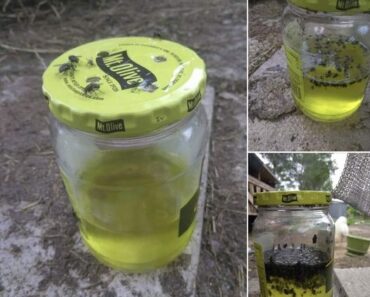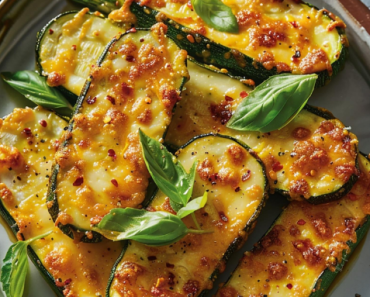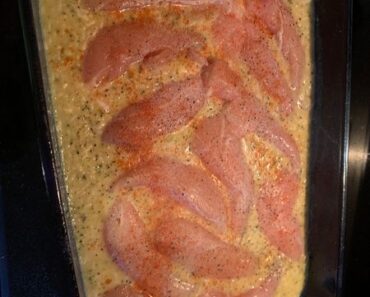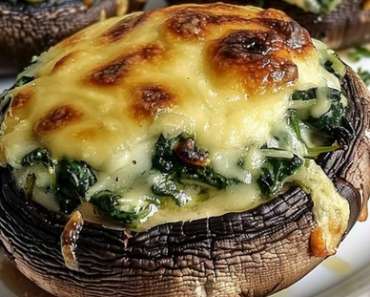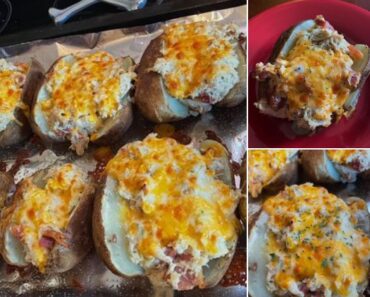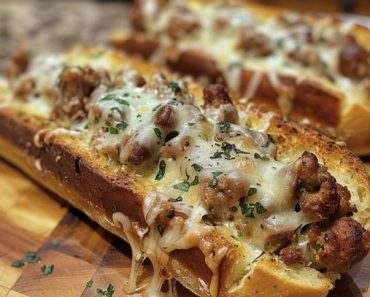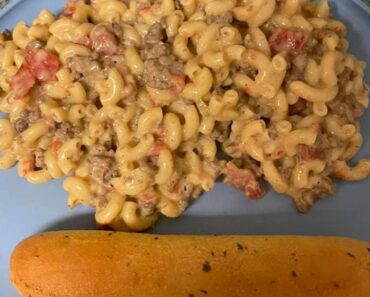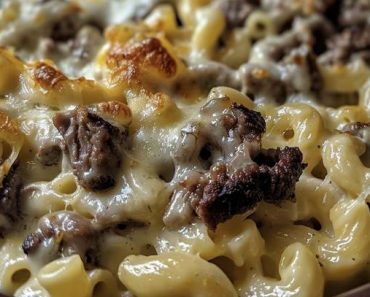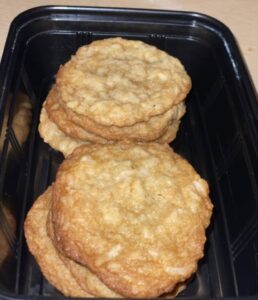
Chewy Coconut Cookies: A Delightful, Easy-to-Make Treat🥥
Imagine the comforting aroma of sweet, buttery cookies wafting through your kitchen. These chewy coconut cookies are not only a breeze to prepare but also irresistibly delicious. With their light, buttery texture and addictive chewiness, they’re sure to become a family favorite. Whether you’re making them for a cozy night in or to share with friends and family, these cookies will hit the spot every time.
Ingredients Overview:
- Butter (1/2 Cup, Softened): Adds richness and a tender crumb to the cookies.
- Brown Sugar (1/2 Cup): Provides a deep, molasses-like sweetness and contributes to the chewiness.
- Granulated Sugar (1/2 Cup): Balances the sweetness and helps achieve a slight crispness on the edges.
- Egg (1): Binds the ingredients together and adds moisture.
- Vanilla Extract (1 Teaspoon): Enhances the overall flavor with a warm, sweet aroma.
- Flaked Coconut (1 1/2 Cups): The star ingredient, giving the cookies their distinctive texture and flavor.
- All-Purpose Flour (1 Cup): Forms the base structure of the cookies.
- Baking Soda (1/2 Teaspoon): Helps the cookies rise and spread.
- Baking Powder (1/2 Teaspoon): Adds lightness and ensures the cookies don’t get too dense.
- Salt (Pinch): Balances the sweetness and enhances the other flavors.
Step-by-Step Cooking Instructions:
1. Preheat Your Oven: Preheat your oven to 350°F (175°C) to ensure it’s ready when your cookie dough is.
2. Prepare the Dry Ingredients: In a medium bowl, sift together the flour, baking soda, baking powder, and a pinch of salt. This ensures even distribution of the leavening agents.
3. Cream the Butter and Sugars: In a separate large bowl, use a mixer to combine the softened butter, brown sugar, and granulated sugar until the mixture is light and fluffy. This step is crucial for a smooth, creamy texture.
4. Add the Egg and Vanilla: Beat in the egg and vanilla extract until fully incorporated, creating a smooth and homogeneous mixture.
5. Combine Wet and Dry Ingredients: Gradually add the sifted flour mixture to the butter mixture, mixing on low speed until just combined. Be careful not to overmix.
6. Fold in the Coconut: Gently fold in the flaked coconut, ensuring it is evenly distributed throughout the dough.
7. Shape the Cookies: Drop teaspoonfuls of dough onto parchment-lined baking sheets, spacing them about 2 inches apart to allow for spreading.
8. Bake: Bake in the preheated oven for 8-10 minutes, or until the edges are golden brown. The centers should remain slightly soft.
9. Cool: Allow the cookies to cool on the baking sheet for a few minutes before transferring them to a wire rack to cool completely.
Storage and Reheating Tips:
- Storage: Store the cooled cookies in an airtight container at room temperature for up to one week. They can also be frozen for up to three months.
- Reheating: To enjoy warm cookies, reheat in the oven at 300°F (150°C) for about 5 minutes, or microwave for 10-15 seconds.
Helpful Tips for Enhancing the Recipe:
**1. Use Unsweetened Coconut: Opt for unsweetened coconut to control the overall sweetness.
**2. Toast the Coconut: For an extra depth of flavor, lightly toast the coconut flakes before adding them to the dough.
**3. Room Temperature Ingredients: Ensure your butter and egg are at room temperature for easier mixing and better texture.
**4. Chill the Dough: Chill the dough for 30 minutes before baking to prevent excessive spreading.
**5. Even Sizing: Use a cookie scoop to ensure uniform-sized cookies, which will bake evenly.
**6. Experiment with Add-Ins: Try adding chocolate chips or chopped nuts for variety.
**7. Use Quality Vanilla: A good-quality vanilla extract makes a noticeable difference in flavor.
**8. Monitor Baking Time: Keep a close eye on the baking time to avoid overbaking, as the cookies can go from perfect to overdone quickly.
**9. Test Bake: Bake a single cookie first to see how much it spreads, and adjust the dough or spacing as needed.
**10. Use Parchment Paper: Always use parchment paper or a silicone baking mat to prevent sticking and ensure easy cleanup.
Popular Questions and Answers:
Q: Can I use coconut oil instead of butter? A: Yes, you can substitute coconut oil for butter, but it will slightly change the texture and flavor of the cookies.
Q: Can I make these cookies gluten-free? A: Absolutely! Use a gluten-free all-purpose flour blend as a 1:1 substitute for regular flour.
Q: What’s the best way to measure flour for this recipe? A: Spoon the flour into your measuring cup and level it off with a knife for an accurate measurement.
Q: Can I reduce the sugar in the recipe? A: You can reduce the sugar slightly, but it may affect the texture and sweetness of the cookies.
Q: How do I know when the cookies are done? A: The edges should be golden brown, and the centers should still be slightly soft. They will firm up as they cool.
Q: Can I freeze the dough? A: Yes, you can freeze the cookie dough. Scoop it onto a baking sheet, freeze until solid, then transfer to a freezer bag.
Q: How can I make the cookies chewier? A: Use more brown sugar than granulated sugar for a chewier texture.
Q: Can I add flavor extracts? A: Yes, almond extract or coconut extract can enhance the flavor of these cookies.
Q: What can I do if my dough is too dry? A: Add a tablespoon of milk or water if the dough seems too dry or crumbly.
Q: How long can I keep the dough in the fridge? A: You can refrigerate the dough for up to 3 days before baking.
Secrets for Achieving Culinary Perfection:
**1. Measure Ingredients Accurately: Baking is a science, and precise measurements ensure consistent results.
**2. Creaming Method: Properly cream the butter and sugars to incorporate air, which helps with the texture.
**3. Don’t Overmix: Overmixing can result in tough cookies, so mix until just combined.
**4. Use Fresh Ingredients: Fresh baking soda and baking powder ensure your cookies rise properly.
**5. Even Temperature: Bake on the middle rack for even heat distribution.
**6. Cooling Matters: Let cookies cool on the baking sheet before transferring to avoid breaking.
**7. Oven Thermometer: Use an oven thermometer to ensure your oven is at the correct temperature.
**8. Soft Butter: Softened butter should be slightly cool to the touch, not greasy or melted.
**9. Chill the Dough: Chilling helps control spreading and enhances flavor development.
**10. Watch for Doneness: Slightly underbake for chewier cookies; they’ll continue to cook on the sheet.
**11. Flavor Boost: A pinch of sea salt on top before baking enhances the sweetness and depth of flavor.
**12. Even Spacing: Space cookies evenly on the baking sheet to ensure they don’t merge together.
**13. Cooling Rack: Use a wire cooling rack for better air circulation and to prevent sogginess.
**14. Batch Size: Bake in small batches to avoid overcrowding and ensure even baking.
**15. Personal Touch: Add your favorite mix-ins like dried fruit or spices to make the recipe your own.
Enjoy the process of baking these delightful chewy coconut cookies, and revel in the joy they bring to your home. Happy baking

